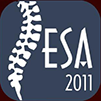Subject Area
Degenerative
Article Type
Clinical Study
Abstract
Background Data: Unfortunately, large anterior cervical osteophytes are a forgotten cause of dysphagia and dyspnea. They can cause marked change in diet habits or interfere with patients’ daily activities and sleep without significant neck pain or radicular pain. Diffuse idiopathic skeletal hyperostosis, ankylosing spondylitis, degenerative changes, and prior trauma including surgery can cause cervical osteophytes. Conservative medical treatment and diet modification may be a useful option when treating these patients; however, surgery may be mandatory, in particular with sever progressive symptoms not responding to conservative measures with excellent results and accepted incidence of complications. Study Design: This is a retrospective clinical case study. Purpose: To highlight this uncommon cause of dyspnea and dysphagia and define the possible management strategies. Patients and Methods: This study was conducted in Mansoura University Hospital on nine patients presented with dysphagia, dyspnea, or both. The cause of their symptoms was large anterior cervical osteophytes. Six patients were males and 3 were females with their age ranged from 53 to 75 years. All patients were assessed by X-ray, CT, and MRI of the cervical spine and underwent fiber optic nasoendoscopy to assess posterior pharyngeal wall and other causes of upper airway obstruction. All patients had a trial of conservative measures including anti-inflammatory, antireflux medication, corticosteroids, diet modification, and consultations with specialists in rheumatology and speech and swallowing therapy. Results: Of the 9 patients, three patients improved on the above-mentioned conservative measures, and one patient who presented with stridor underwent urgent tracheostomy and refused further surgery. Five patients who failed conservative therapy for at least three months underwent surgical excision of their osteophytes through anterior cervical approach. Improvement of surgical group was satisfactory according to the Dysphagia Scoring System. Conclusion: Although large anterior cervical osteophyte is a rare cause of dysphagia and dyspnea, it should be checked and excluded especially in elderly patients. Adequate conservative therapy is a valid effective option; however, surgery in some of these patients may be simple, safe, and effective. (2019ESJ188)
Keywords
Keywords: Osteophytes, Cervical, Dysphagia, Dyspnea
How to Cite This Article
Elsobky, Hesham; Zidan, Ashraf; Khalil, Amr; and Elsobky, Ahmed
(2019)
"Dysphagia and Dyspnea Caused by Large Anterior Cervical Osteophyte,"
Advanced Spine Journal: Vol. 31
:
Iss.
1
, Article 6.
Available at: https://doi.org/10.21608/esj.2020.8121.1099




















